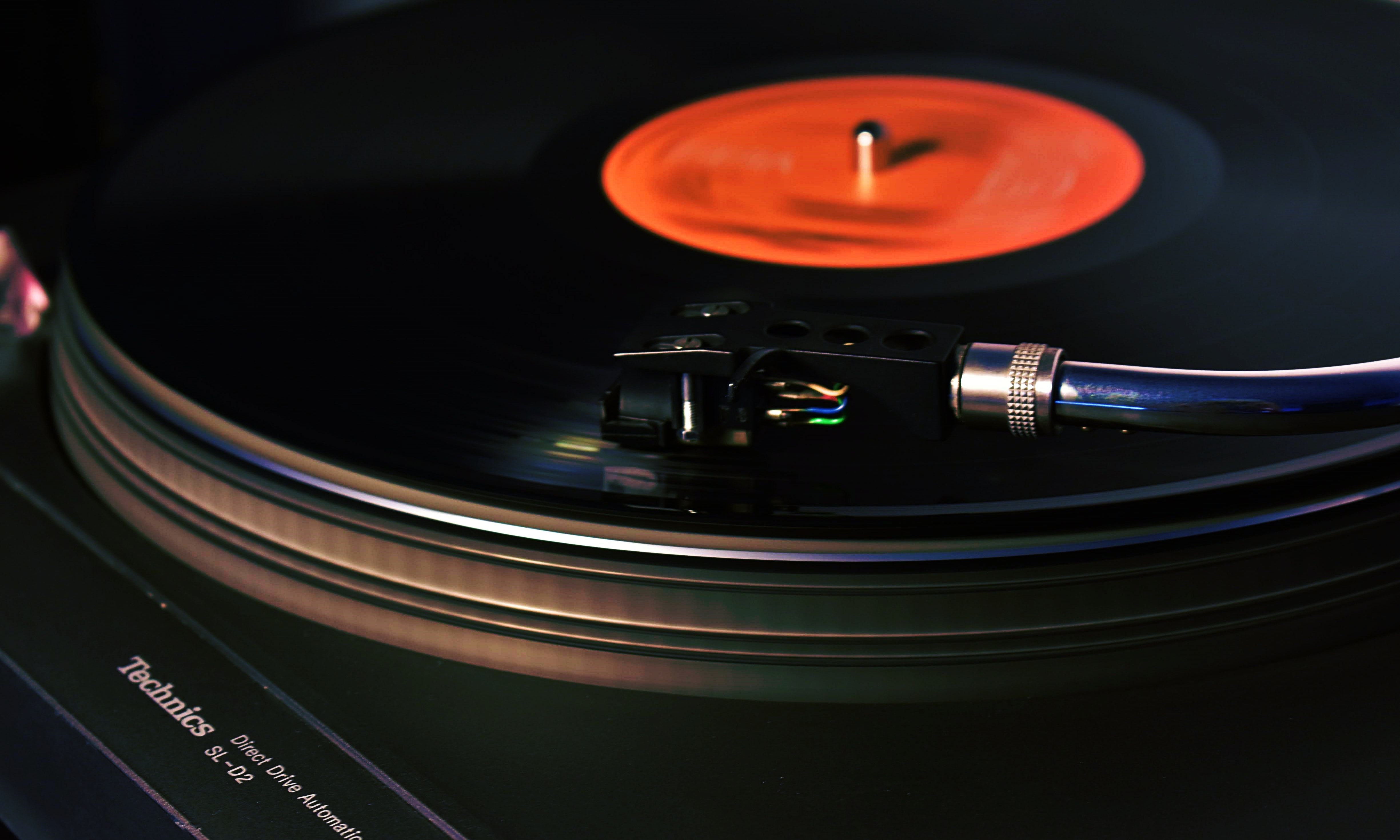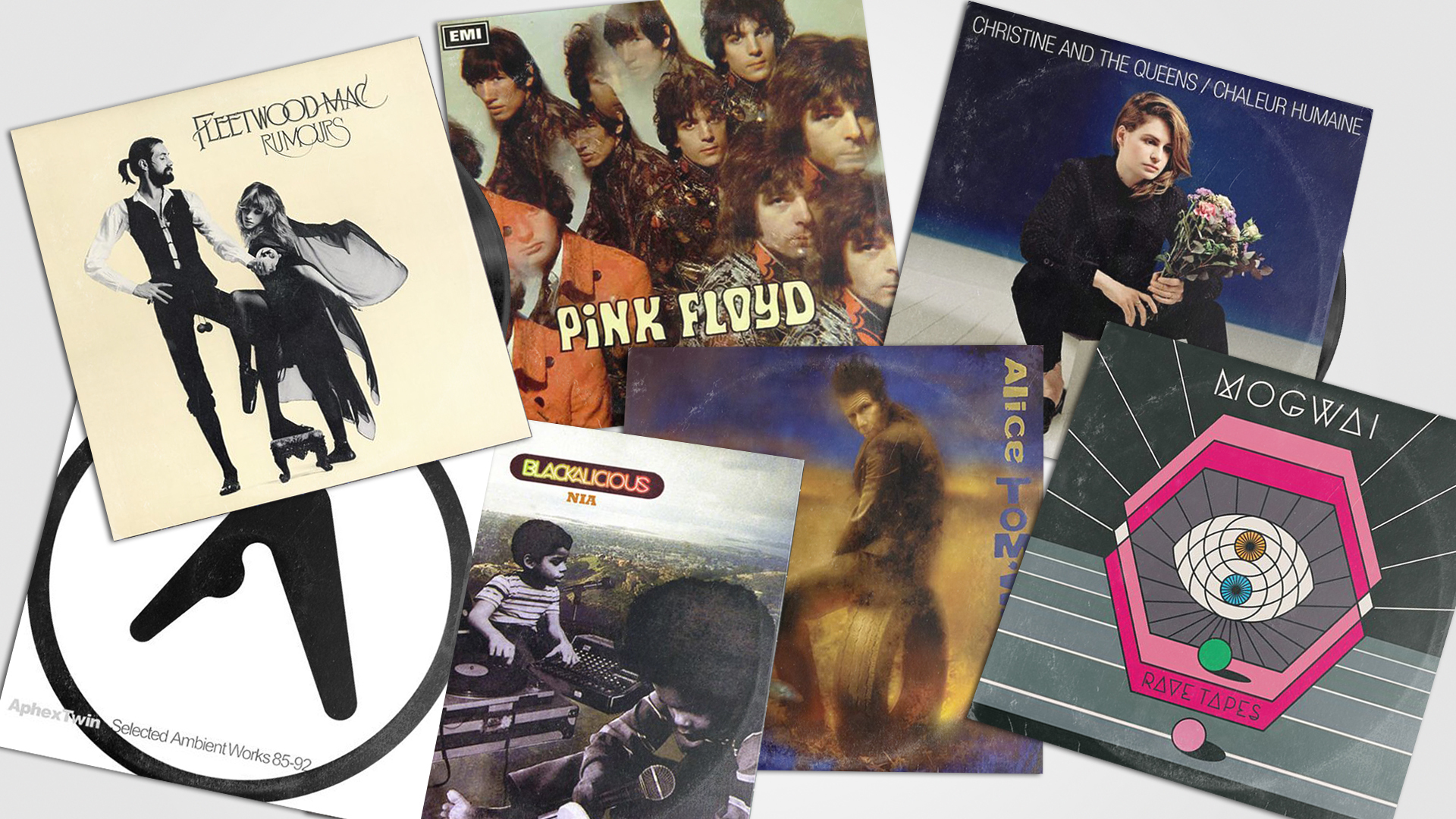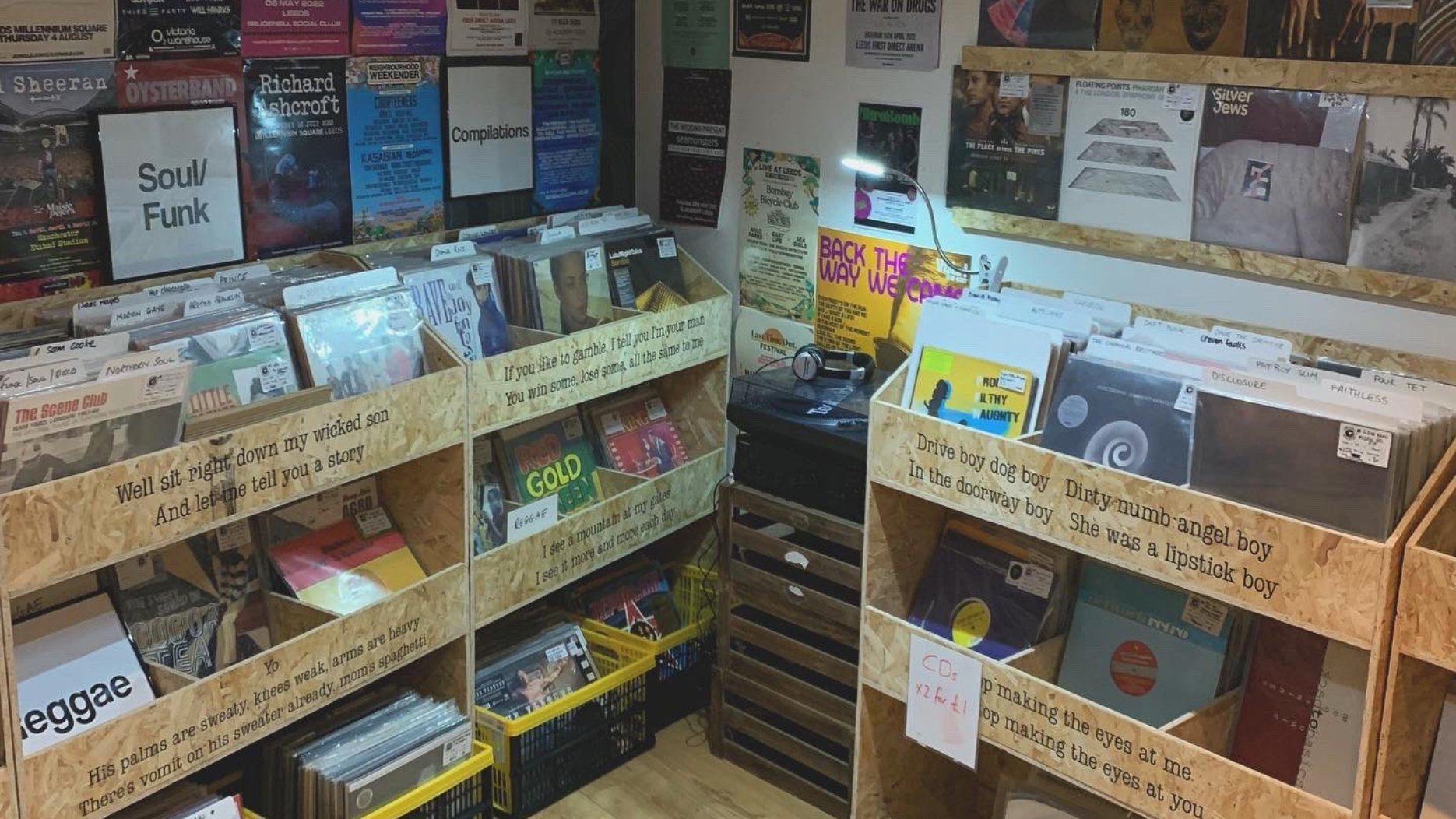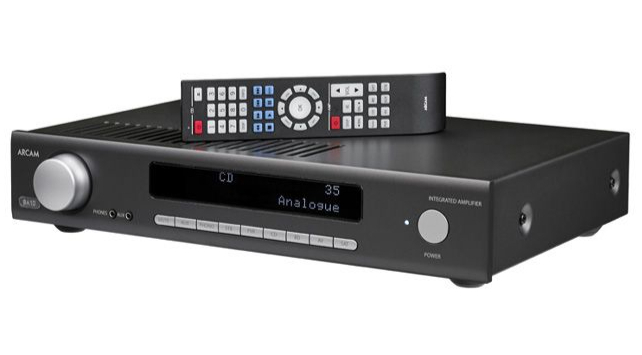I found the vinyl revival underwhelming... until I made one effective system upgrade
My records have never sounded better...

This year, I joined the vinyl revival. I know, I'm only a few years behind. But, you see, it's sort of a second coming for me (if you don't include the first time round – I'm old enough to have started my music-listening journey in the pre-digital age).
Let me explain myself. Around a decade ago – long before I joined the What Hi-Fi? team, and so was relatively naive as to what actually made hi-fi work – I bought a brand new system of separates that included a turntable, the first I'd owned since the mid-’90s when CDs replaced records in my principal listening habits.
The year I bought this new system was around the apex of vinyl's resurgence, and I excitedly got my new kit set up and brought my boxes and boxes of old records down from the attic to play on my then-new Marantz TT5005 deck.
It was a blast of nostalgia, seeing those beautiful foot-square record sleeves with their amazing artwork, including an original Led Zeppelin 3 with its spinnable inner wheel that changed the album art. Ooh, and that original 'floppy disc' Blue Monday 12-inch (okay, I'm just showing off now). I've always loved my records, and it was just as thrilling putting the needle on the record in time-honoured fashion, listening to the crackles and pops as the album started up. And trying to convince my children that this was what music was all about – an album played in the order its creators intended, with two distinct sides (or more); priorities that were already obsolete to younger generations randomly streaming or listening to MP3s on shuffle.
New albums were duly bought from Bristol's amazing but now sadly no-more Rise Records, providing another warm wave of nostalgia for the pleasure of leafing through album sleeves in a bricks-and-mortar record shop.
Fade out

Then, over the months and years, the 'novelty' of vinyl just wore off. Convenience won out; by and by CDs returned, MP3s were back via the iPod, and then streaming from a smartphone became my go-to source. And the vinyl, though remaining on display in my music listening room, got largely overlooked once more.
Why? Because the most crucial aspect, the sound, was to my ears just… okay. That famous 'warmth' that I'd heard so many wax lyrical about, seemed no match for the clarity and forthrightness of the CD, and I dismissed it all as squinting back in time through rose-tinted specs to a younger me at the door of Jumbo Records in Leeds as it opened on the day of Nevermind's vinyl release.
Get the What Hi-Fi? Newsletter
The latest hi-fi, home cinema and tech news, reviews, buying advice and deals, direct to your inbox.
A new spin

And then, this year, I made my first upgrades to my system in quite a while, this time armed with the knowledge I've now acquired as a What Hi-Fi? team member. The main new component in my new system is the well-specced and affordable Arcam SA10 integrated amplifier (pictured below). All the digital and analogue inputs I need? Check. Good looking industrial aesthetic? Check. Phono stage? Check. Then I added some lovely, clear Wharfedale Diamond 12.1 standmounters… but this time I didn't rush to buy a new turntable, because in my mind, still, the sound from vinyl wasn't really anything special. Or so I thought.
Plumbing the Arcam in, listening to all sources through it and hearing improvements across the board, I duly tested the turntable. It made a horrible noise, and realisation dawned. My old, clearly more basic Cambridge Audio amplifier did not contain a phono stage; instead the Marantz deck's built-in phono amp had been struggling with the heavy lifting this whole time – and was now clashing with the Arcam.
I hadn't really thought to check the specs of my outgoing amp, and at the time I bought it I did what a lot of people have done, I'm sure – which is to go into Richer Sounds, listen to some kit in their test room (as I recall, I only listened to CDs during testing) and take the sage advice of the lovely Richer Sounds folk as they put together a budget-appropriate set-up for my needs. One of those 'needs' being the ability to play vinyl, but not necessarily to play vinyl at its best.
Thus I ended up with a turntable with a built-in phono stage, doubtlessly to help keep the system within budget, but without fully understanding what it meant. Regular What Hi-Fi? readers will know more than I did back then, since we always advise upgrading to a higher-quality phono stage rather than using one built into a deck if you're in any way serious about vinyl replay.
So, after locating the phono stage's switch under the Marantz's platter, switching it off and letting the Arcam take over, I lowered the arm onto the record that came to hand first, The Offspring's 1994 debut Smash, and my ears were truly opened.

The clarity and punch with which the Californian punks' energetic tunes leapt from my new set-up was astonishing – a testament to something that I knew all about, of course, but hadn't really given much practical thought to until it came time to upgrade my own set-up. Namely, that vinyl needs a good phono stage to do it justice.
For the rest of that day I put on record after record and just listened, with a big smile on my face. Vinyl pressed in the '70s, '80s and '90s, from Fleetwood Mac to Echo & The Bunnymen to Soundgarden, sounded as fresh as it ever did – actually, fresher, since this is almost certainly the best system those old albums have ever been played through. The newer, heavy-weight platters made sense now too – more recent recordings given a literal new spin, seeming to match, and in some ways better, the enjoyment of CD listening or even high-quality streaming – and with all that joyous nostalgia and fun of physically playing records too. I was hooked.
This year, I'm buying records again – Arcade Fire's We and Arctic Monkeys' The Car sound particularly good on their 180g vinyl discs. I'm certain the magic of playing records won't fade this time, because now I can properly hear the difference and I finally 'get' the vinyl revival.
And more than that, it's set me on a path. Upgrading little by little, component by component, is definitely in my future as money allows. Because if that better quality phono stage can make so much difference, then even incremental improvements in things like cable quality (and for sure, the turntable and its cartridge are next), can only better the sound quality – and that is something I am excited to hear.
MORE:
Our expert pick of the best turntables and best phono preamps you can buy
The 16 best turntables of What Hi-Fi?'s lifetime
15 of the best turntable accessories for better vinyl sound
Chris is What Hi-Fi?'s Production Editor. He has 25 years under his belt as an online and print magazine journalist, editing and writing about music, film, sport, video games and more. Having started his career at the NME, he spent 10 years on staff at legendary lad's mag Loaded, and has since been Editor of Rhythm and Official Xbox magazines.
-
ultraminiature I think the author should have read through some of the back catalogue of magazines.Reply
The journey of upgrades and picking great components that sound awful together until you find the start of something that works together and is in your budget has been reported by so many. -
TrevC I've always found the cartridge and stylus profile to make the biggest difference to SQ, but hardly mentioned here.Reply -
djh1697 I never got rid of my Pink Triangle, purchased in 1985, upgraded, and serviced by Peter Swain of #Cymbiosis fame. He works more Majik on other projects than LP12's. I did an A/B comparison with the LP12 Majik at the time, the LP12 sounded pale and anemic in comparison. Interesting how Linn has copied Pink Triangle and adopted the DC motor, his design team must have had a massive disagreement with Mr TReply -
Drummerguy ReplyTrevC said:I've always found the cartridge and stylus profile to make the biggest difference to SQ, but hardly mentioned here.
Hi:
I agree in part with you "TreyC" - allow me to explain! Being a professional studio and touring musician for over 40 years and a recipient of a "Juno" music award I've always had a need for an excellent hi-fi system as great quality sound reproduction is now and has been a necessity in my line of work. In all that time I firmly believe that, as "Linn" used to suggest in their ads and to expand on what "Trey C" mentioned above, always start at the source of the reproduction chain. In the case of vinyl reproduction the "cartridge, arm and turntable" should get top priority i.e. the best you can afford. Today I have a Michell GyroDec SE on maglev feet with a Rega RB 3000 tonearm and a Benz Micro LPS- MR moving coil cartridge which is connected to a "Fosgate Signature" tube phono pre-amp. However - this is my current setup - my first TT some 50 years ago was one of the excellent at the time "Micro Seiki Direct Drive" turntables which I still have and is working wonderfully in my upstairs system. At that time it was fitted with the very well rated and respected Grace F9 moving magnet cartridge. The "Micro" is still giving me superb vinyl reproduction but now is fitted with a" Denon DL- S1" moving coil running into a vintage "Denon AU-320" step up device and from there into a "Graham Slee" Era V Gold phono pre-amp. I still have my original 1983 vintage Rega P3 with its RB 300 arm which I bought "new" in '83 and a P5 with the RB 700 arm - both still running great! I've never had to replace anything on them but for the belts! The moral of this story is if you can save and buy the best quality gear you can afford it'll last you for as long as you'll want it - makes very sound financial sense.
Some system background may be appropriate at this point. It's taken me roughly 45 years to acquire my current system which consists of the following:
Of course the above mentioned "Michell" deck, arm and cartridge and associated hook gear.
Magnapan 1.7's on "Mye" stands ( I've always loved Magnapans starting with my first MG-II's back in the 70's ) along with a pair of "REL" R-205 10" powered subs which add a bit of low bottom end to the 1.7's. The "REL's" integrate beautifully with Magnapans and are one of the few brands that can because of the options they offer in the ways you can integrate them with the 1.7's.
Amplification is handled by my "Audio Space" Reference 3.1 KT-88 tubed integrated amp which works great with the 1.7's
CD's are handled by my "Shanling - Export Edition" tube CD 300 with the it's digital XLR outputs running into a "Schiit Audio" Yggdrasil DAC.
It's taken me many years of listening to various components and the subsequent comparisons to finally arrive with a system that I truly enjoy everyday - it is very possible .The "in home" listening to various components was a very important key in arriving at my current system. This is possible if you're able to established a good and honest working relationship with your favourite Audio or Hi end shop. Unfortunately these specialty shops are becoming harder and harder to find as the "big box" conglomerates seem to be moving in - but - persevere - it is possible!
Good luck! -
Jasonovich I remember my Logic Turntable fondly, aligning the suspension coils with a spirit leveller was frustrating as well as rewarding.Reply
It had a great cast in the supporting role, two mono block Class A Edison valve kit tube amps, these were bridged. The two mid tower Musical Fidelity speakers served as the mouth piece. Oh fudge, I can't remember my preamp, was it the Crimson? Yes I think it was.
I believe it was the mid eighties, Sony/Phillips gave birth to CD laser machines.
I was intrigued I had to have one. I bought my very first CD player, the iconic front loading silver bronze coloured Marantz.
In those days, they built them like tanks.
It was love at first sight, in terms of musical integrity it showed parity with the turntable, No wow and flutter and incredible stability in pitch. The Logic turntable had wonderful neutrality, extracted great detail from MC stylus, as well as the known attributes of Analog such as warmth and depth but this new charlatan was wooing me away.
So convenient, I can play out whole album without switching it over.
Roll forward the clock and now I'm an old sad....... Ah hem,
Anyway yes, I keep a massive collection of music on a PC server.
I listen to high a resolution DSD and Lossless FLAC. ( Thank you www.nativedsd.com for your excellent online catalogue, I hope What HiFi don't mind me giving you a plug)
Its nice vinyl has made a revival and this has increased choice and allows the music listener to explore the numerous audio formats that are available.
Audiophiles should never forget the fun and be too hang up with the branding. -
Rui Reply
i just want to refer that smash was the second album by a great label but already if not 10 , 8 years band when smash came out and there was a compilation cd called "The SST years"their first labelWhat Hi-Fi? said:A simple but essential upgrade to my hi-fi system opened my ears to how good vinyl really sounds.
I found the vinyl revival underwhelming... until I made one effective system upgrade : Read more -
crimson69666 ReplyWhat Hi-Fi? said:A simple but essential upgrade to my hi-fi system opened my ears to how good vinyl really sounds.
I found the vinyl revival underwhelming... until I made one effective system upgrade : Read mor
Waste of money, you can get superior quality from a basic DAC like an SMSL SU-1 DAC (~99$): it'll blow any analog source with ease.... Chase good recordings, this is where the quality is from.. Analog is lower fidelity across the board... Basic undergrad stuff in electrical engineering...Rui said:i just want to refer that smash was the second album by a great label but already if not 10 , 8 years band when smash came out and there was a compilation cd called "The SST years"their first label -
Rui Reply
All that you said i already heard but i can assure you that i´ve tried with diferent Amplifiers and Speakers from the 70´s ,the 80´s , the 90´s and from 2019 and having good Turntables and good CD players with very good internal dac´s,crimson69666 said:Waste of money, you can get superior quality from a basic DAC like an SMSL SU-1 DAC (~99$): it'll blow any analog source with ease.... Chase good recordings, this is where the quality is from.. Analog is lower fidelity across the board... Basic undergrad stuff in electrical engineering...
as i do prefer to change the internal one for a better DAC that is cheap to do , Analog is far more advanced than Digital and i have nothing against Digital, (almost low-fi)
I have a home DAT deck since they came out by Sony, the only available at the time, but i understand not everybody as a system that sounds perfect and can notice the diferencies between a Record, a Compact Disc ,a DAT a Minidisc or Cassette Decks and the best of all,(drums) Reel Open Deck,
i almost considerd the DAT as good as the Reel Open Deck but close never equal as it is the highest form of home taping and sound quality ,
whatever you record into a Reel will sound better and not one format can achive the Reels quality of sound as there is no Cassette Deck that can do so, maybe close but no cigar.
About electronic engeniering there is nothing basic about digital and i could say in 50 years for sure digital will be the best but already is,
just not to us consumers ,the perpectuation of the CD format a 70´s developed digitral format still survives today, only because it´s cheap and in general people prefer it but in the late 80´s there was already a more advanced format in digital,
but for economical reasons will be always like it was when they developed it 40 something years ago,not equal as in the 80´s the CD´s were built from a much better and expensive material.
I remenber most of the people with knowledge comenting the so expected SACD, "it will be a cd with vinyl quality" but at the time we never called Vinyl to Records, as there are more than vinyl to make records as wax that all coloured records are made of,
the SACD already came out but far from what was promissed and nothing that is interesting to me, allthough i bought a sony SACD player ,the first i saw because the price was what today is 400 and something €´s but a year passed and still in the same spot but somehow the price tag was 80€, all in brushed aluminium and strangelly from Sony as it looked well built but only stereo as it was suposed to be.
I think you already notice that as we go forward in time old devices become fashion and most of the guitars in use are Gibson or Fender from the 50´s till the late 60´s as the amplifiers also are ,i do remenber when they started to use again orange amplifiers and also the use of electronic keyboards instead of synthesizers, like the moog and melotron and many more like the electric piano from Fender.
I´ll wait for it to happen, Digital over Analog and your words will be the truth.
